The Rock Churches of Lalibela
Monday, 1st June 2009 by Ian Brown
Nestled amongst the highlands of Northern Ethiopia, the town of Lalibela is a destination for Orthodox Christian pilgrims drawn to its famed monolithic Churches.
Dated to the 12th and 13th centuries, but still actively used for worship, the Churches are each carved from a single piece of rock - either down into the ground, or into a hillside. The most well-known of the Churches is Bete Giyorgis1, or the Church of St. George, with its distinctive cross shape approximately 25m square, surrounded by deep trench walls.
The last of the Churches to be built, and the best preserved, Bete Giyorgis was constructed on the orders of King Gebre Mesqel Lalibela after seeing it in a vision. The town (formerly known as Roha) later took his name to honour his legacy.
A number of structures described below have tin roofs - added, one assumes, rather later than the 13th century. While this obscures the view on Google's images, they are obviously intended to protect the historic structures from the elements. Panoramio has an excellent selection of images of most of the Churches to give you a true sense of their beauty.
Just to the north-east of Bete Giyorgis can be found a cluster of 6 Churches known as the Northern Group. Bete Medhane Alem (the largest tin roof - the structure shown clearly here in an excellent historic photo) is considered the largest monolithic Church in the world, and houses the Lalibela Cross, one of Ethiopia's most sacred religious relics.
The middle of the 3 roofs houses Bete Maryam, thought to be the oldest of the Churches in the area, while Bete Golgotha - at the western edge of this Group - may contain the tomb of King Lalibela.
The Eastern Group consists of 4 Churches, notably Bete Amanuel, thought to be the Royal Chapel, and Bete Abba Libanos which is carved from a rock face on a hillside (respectively, the largest and bottom-most of the roofs in the image below).
The Rock Churches are protected as a UNESCO World Heritage Site. For further reading, Wikipedia has good information, and Sacred Destinations has more background accompanied by superb pictures.
-
There are various spellings of the names of these Churches. I've decided to go with the spellings used by Wikipedia. ↩︎
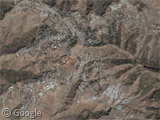

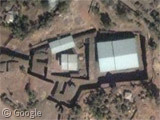
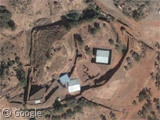
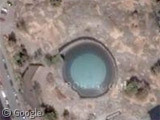
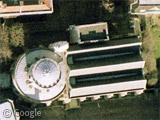
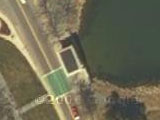
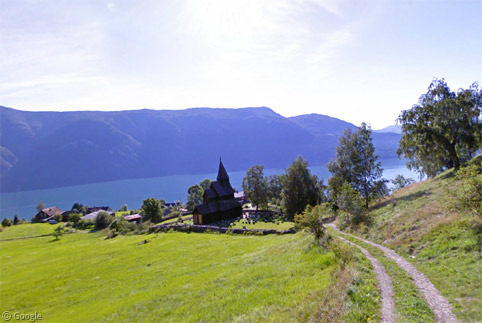
Are these people gathering close to the first church? https://www.googlesightseeing.com/maps?p=&c=&t=k&hl=en&ll=12.032731,39.038817&z=18
to know more about lalibela churchees and the surroundings please log on to http://www.lalibelachurches.com
Lalibela Churches Administrations
The other prime site in the Ethiopian ecclesia is the Aksum Tabot Church – the small cross-shaped building below the big dome.
The attribution to Lalibela refers to a passage from the Khedra Nagast, an Ethipian history dating from the sixteenth Century, which suggests that Lalibela, driven into exile, may have reached Jerusalem in Crusader times (1168). It is possible that some of the Templar forces may have deserted in his support, weakening the Crusader forces at the Horns of Hattin which turned the tables in favour of Islam. It is more certain that Pope Eugenius IV commissioned the remnants of the Portuguese Templars, the Order of Christ, under Henry the Navigator, to circumnavigate Africa to investigate the Tabot legend, thereby sparking the global exploration which fed the Renaissance.
To know more about the churches of Lalibela and the surroundings please log on to http://www.lalibelachurches.com Please share this websites to friends and family
I know where the Ark of the Covenant is kept.
Shhhhhhhhhh…don’t tell anyone.
Aw, Patrick, and there I was keeping it quiet. Sounds like I’ve a blog admirer here.